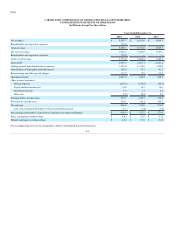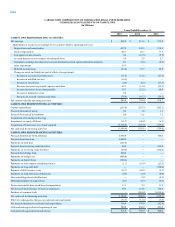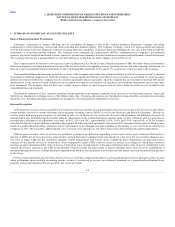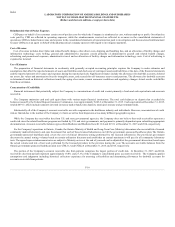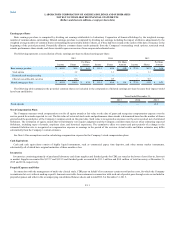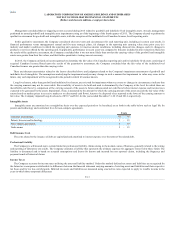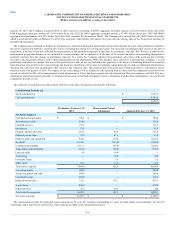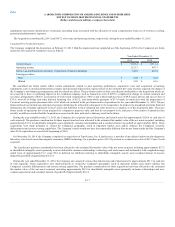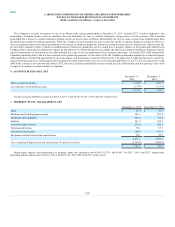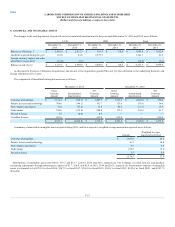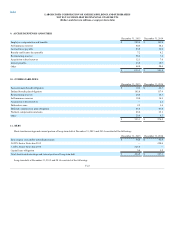LabCorp 2015 Annual Report Download - page 92
Download and view the complete annual report
Please find page 92 of the 2015 LabCorp annual report below. You can navigate through the pages in the report by either clicking on the pages listed below, or by using the keyword search tool below to find specific information within the annual report.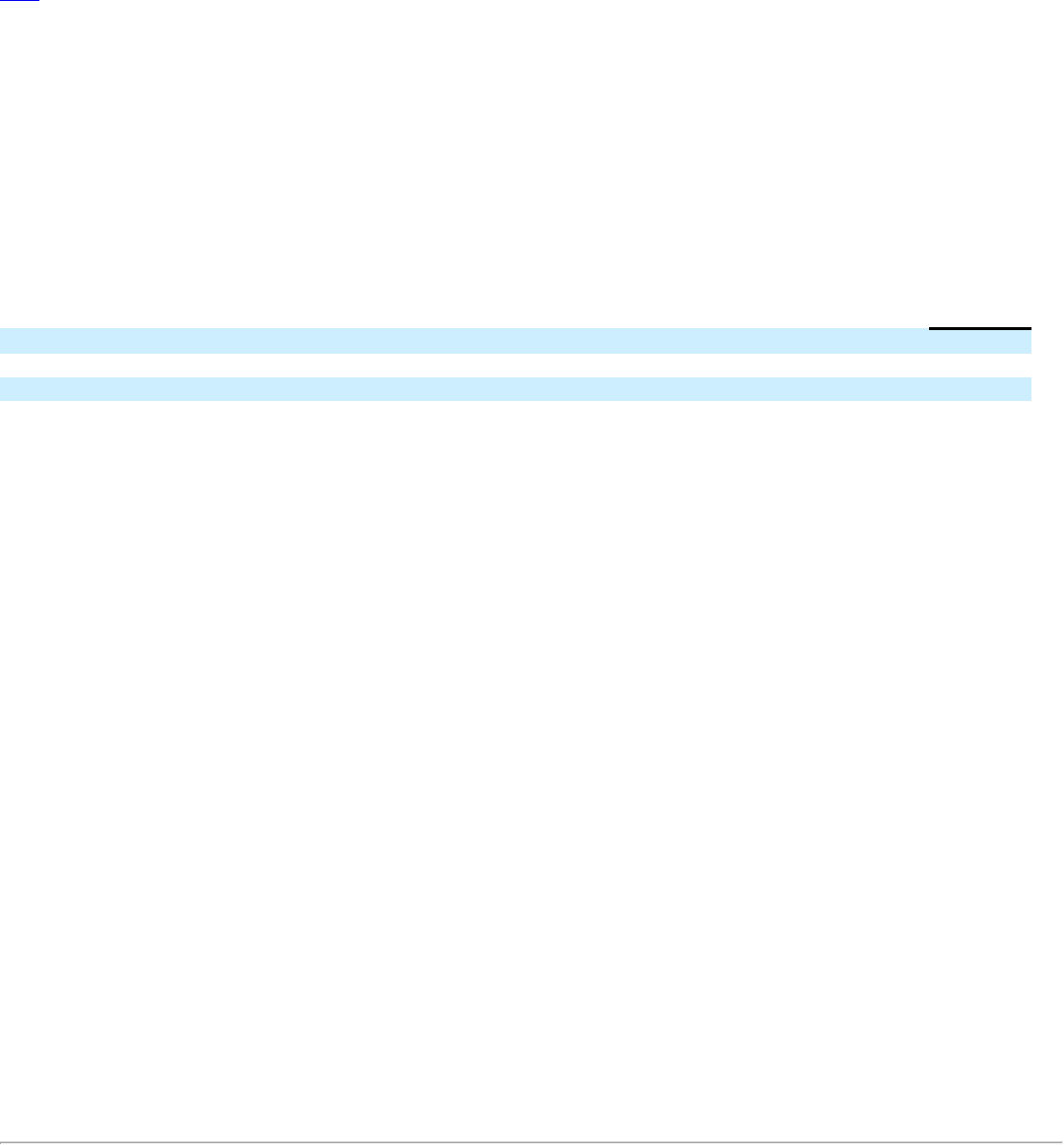
Index
Also included in prepaid expenses and other current assets are assets held for sale. The Company records long-lived assets as held for sale when a plan to
sell the asset has been initiated and all other held for sale criteria have been satisfied. Assets classified as held for sale of $72.4 as of December 31, 2015 are
recorded in other current assets on the consolidated balance sheet at the lower of their carrying value or fair value less cost to sell. There were no assets held
for sale as of December 31, 2014.
Property, plant and equipment are recorded at cost. The cost of properties held under capital leases is equal to the lower of the net present value of the
minimum lease payments or the fair value of the leased property at the inception of the lease. Depreciation and amortization expense is computed on all
classes of assets based on their estimated useful lives, as indicated below, using the straight-line method.
Years
Buildings and building improvements 10 - 40
Machinery and equipment 3 - 10
Furniture and fixtures 5 - 10
Software 3 - 10
Leasehold improvements and assets held under capital leases are amortized over the shorter of their estimated useful lives or the term of the related leases.
Expenditures for repairs and maintenance are charged to operations as incurred. Retirements, sales and other disposals of assets are recorded by removing the
cost and accumulated depreciation from the related accounts with any resulting gain or loss reflected in the consolidated statements of operations.
The Company capitalizes purchased software which is ready for service and capitalizes software development costs incurred on significant projects
starting from the time that the preliminary project stage is completed and the Company commits to funding a project until the project is substantially
complete and the software is ready for its intended use. Capitalized costs include direct material and service costs and payroll and payroll-related costs.
Research and development (R&D) costs and other computer software maintenance costs related to software development are expensed as incurred.
Capitalized software costs are amortized using the straight-line method over the estimated useful life of the underlying system, generally five years.
The Company assesses goodwill and indefinite-lived intangibles for impairment at least annually or whenever events or changes in circumstances
indicate that the carrying amount of such assets may not be recoverable. In 2015, the Company changed the timing of its annual impairment testing from the
end of the year to the beginning of the fourth quarter. In accordance with the FASB updates to their authoritative guidance regarding goodwill and
indefinite-lived intangible asset impairment testing, an entity is allowed to first assess qualitative factors as a basis for determining whether it is necessary to
perform quantitative impairment testing. If an entity determines that it is not more likely than not that the estimated fair value of an asset is less than its
carrying value, then no further testing is required. Otherwise, impairment testing must be performed in accordance with the original accounting standards.
The updated FASB guidance also allows an entity to bypass the qualitative assessment for any reporting unit in its goodwill assessment and proceed directly
to performing the first step of the two-step assessment. Similarly, a company can proceed directly to a quantitative assessment in the case of impairment
testing for indefinite-lived intangible assets as well.
Step One of the goodwill impairment test includes the estimation of the fair value of each reporting unit as compared to the carrying value of the
reporting unit. Reporting units are businesses with discrete financial information that is available and reviewed by management. The Company estimates the
fair value of a reporting unit using both income-based and market-based valuation methods. The income-based approach is based on the reporting unit's
forecasted future cash flows that are discounted to the present value using the reporting unit's weighted average cost of capital. For the market-based
approach, the Company utilizes a number of factors such as publicly available information regarding the market capitalization of the Company as well as
operating results, business plans, market multiples, and present value techniques. Based upon the range of estimated values developed from the income and
market-based methods, the Company determines the estimated fair value for the reporting unit. If the estimated fair value of the reporting unit exceeds the
carrying value, the goodwill is not impaired and no further review is required. However, if the estimated fair value is less than the carrying value, the
Company performs the second step of the goodwill impairment test is performed to measure the amount of the impairment, if any. The second step involves a
hypothetical allocation of the estimated fair value of the reporting unit to its tangible and intangible assets (excluding goodwill) and liabilities as if the
reporting unit were newly acquired, which results in an implied fair value of the goodwill. The amount of the impairment charge is the excess of the recorded
goodwill, if any, over the implied fair value of the goodwill.
F-12



